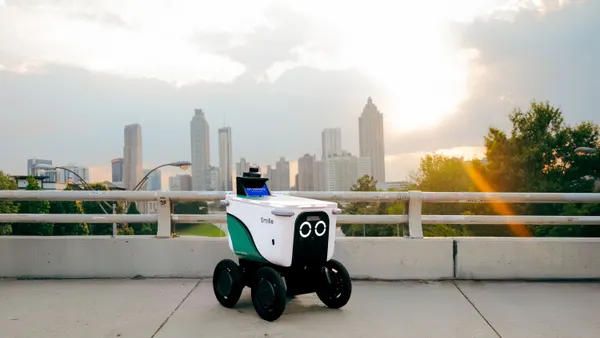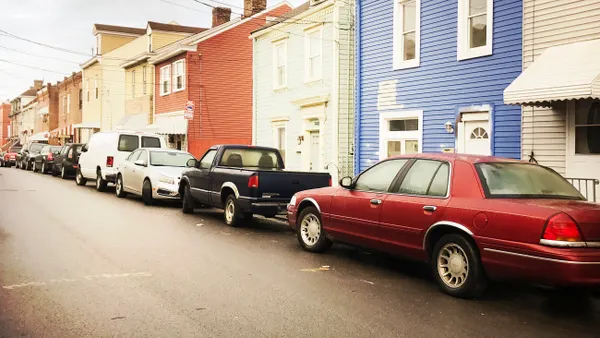Editor's Note: The following is a guest post from Scott Dunn, Senior Director of Business Development Solutions and Services at Axis Communications, Inc.
When we talk about smart cities, there is a lot of discussion around advanced technologies that will make the overall goal a reality. Technologies like AI and machine learning are progressing and can be helpful in creating truly smart cities, but they may not be quite ready for the task at hand.
While their day will come, municipalities should focus on formulating a solid strategy using proven, mature solutions, and many cities already have the equipment they need in place: video surveillance systems.
Cities have long looked to video surveillance for crime deterrence and public safety. However, today’s video systems offer advanced smart capabilities as well. The cameras themselves have evolved to become intelligent computing devices, due to video analytics, integration with other disparate systems, and other developments making it possible to use such systems for more purposes beyond safety and security.
From a smart city perspective, there are several key areas where expanding the use of existing video systems can improve security, operations and more by connecting multiple departments and allowing them to share resources for the greater good — which is the primary goal of a smart city.
Protecting people and property
Because one of the primary duties of a municipality is to protect its residents and their property, safety and security are often the main reasons for deploying video surveillance. To build upon simple surveillance and enhance safety, there are a number of more specific uses for which cameras are well-suited.
The first is the deterrence factor. By placing cameras conspicuously in particular areas of interest, cities can deliver the message that they won’t tolerate illegal activity, such as fighting, drug activity and vandalism. The cameras also serve as a not-so-subtle reminder that any such activity will be recorded and the perpetrator(s) will be identified and prosecuted.
Triggering a response and providing situational awareness for police and first responders are also among the key smart functions of an advanced municipal video surveillance system. Most cities lack the resources to monitor video 24/7, but video analytics can be deployed to detect certain activities or situations. For example, video analytics can detect people in a building after hours and automatically send an alert to an operator or dispatcher, who can view the video and determine what, if any, response is needed.
In a case when a police officer responds to the incident, a dispatcher can continue to monitor video and provide up-to-the-minute insight into what is happening. Additionally, the officer can also view and monitor video from an in-car computer or smart device. Armed with this real-time situational awareness, officers can be assured that they are taking the safest, most effective response.
Further enhancing detection and situational awareness is the ability to assimilate data from other sources into the surveillance solution. In New Orleans, for example, the system integrates with audio analytics to detect gunshots and other sounds of interest, GPS data to enable precise response and other technologies within its Real Time Crime Center, which is monitored around-the-clock.
By adding this kind of intelligence to existing video systems, cities can better protect residents and property by allocating their resources more effectively. Surveillance solutions can help identify particular problem areas, alerting police to the need to patrol those locations more frequently. Similarly, operators can view real-time video from a location to determine whether an officer should be dispatched, eliminating wasted time from responding to non-events. So in addition to beefing up safety and security, video surveillance can help municipalities more efficiently manage what are often limited budgets while delivering greater return on their investment.
An equally important facet of protecting people and places is post-incident investigation. Today’s intelligent video systems can streamline the process with smart searching and other technologies that enable faster, more effective resolution of incidents with high-quality video.
Traffic management
In several studies, traffic problems rank high on people’s lists of annoyances that impact their quality of life. After all, no one wants to live or work in a place where traffic either crawls along slowly or virtually stands still at various times throughout the day. But traffic is not only a nuisance; it can impact a city economically. If a business can’t get supplies delivered or ship its products out of the city efficiently, it may choose to relocate, which impacts the tax base.
Recognizing these challenges, municipalities constantly seek out ways to alleviate vehicle congestion. One of the primary practices is to more efficiently and effectively manage traffic signals to correspond with varying numbers of cars queuing at intersections throughout the day.
Until recently, in most cases, this has meant digging up intersections to install, replace or maintain sensors under the roadway to detect traffic volume and patterns. With video technology, however, this doesn’t have to be such an intensive, disruptive process.
One city that has seized on the potential of video for addressing traffic challenges is Atlanta. In 2017, the city opened its 2.3-mile North Avenue Smart Corridor, a $3 million project leveraging video and other smart technologies to streamline traffic operations along a prominent roadway traveled by around 29,000 vehicles a day. As part of the project, video surveillance cameras were installed in 2015 to monitor parts of the area that were used as traffic sensors to provide real-time data and statistics to optimize traffic at various intersections.
Employing built-in video analytics to detect queue lengths and wait times, the cameras can integrate with the city’s traffic solutions to improve congestion at intersections. Because data is stored in the cloud for several months, it can be used to verify that the system is performing well. It can also provide longer-term insights into potential traffic problems the city should address. Another goal of the Atlanta system is to reduce harmful emissions by making travel more efficient. This expanded use of already-deployed cameras is the embodiment of a smart city working across silos and sharing resources for the greater good.
Lighting challenges
Since municipal surveillance is by nature primarily an outdoor application, it can be challenging to ensure there is adequate lighting for cameras to collect high-quality images. Historically, high-resolution video surveillance cameras have not performed strongly in low or varying lighting or in poor weather conditions. Thermal cameras deliver much better performance in all lighting conditions but have traditionally been prohibitively expensive for municipalities with limited budgets.
Today, both longstanding truths have changed for the better. Technological advances have significantly improved the ability for high-resolution cameras to perform well in low-light or in some cases no-light situations. As processors, sensors and other technologies continue to improve, so too will the ability of these cameras to deliver the crisp, high-quality images for which they are deployed in virtually all lighting conditions. Simultaneously, thermal cameras have become much more affordable in recent years, and video analytics capability has further improved their effectiveness. The combination of these factors has made thermal detection a cost-effective solution that is well within the financial grasp of the majority of municipalities. When deployed together, visible light and thermal cameras combine to deliver an even more powerful solution.
In addition to advances in camera technology, smart lighting has also had a positive impact on security and surveillance. Many cities are working to convert their street lights to LED technology to take advantage of energy, replacement and maintenance savings.
From a surveillance standpoint, LED lighting can be a force multiplier. Older lights tend to affect color reproduction, making it difficult to get an accurate description of a vehicle or a suspect’s clothing and often tying the hands of law enforcement. LED technologies, on the other hand, have little or no effect on color representation, which allows cameras to provide much higher-quality images for security and surveillance than with traditional lighting. Beyond security, LED lighting can deliver high-quality images for parking, access control, traffic and many other applications across multiple departments, further conforming to the definition of a smart city.
By reducing electricity and maintenance costs, cities are able to install more lights to provide greater coverage – and by extension security — cost-effectively.
Public-private partnerships
A common challenge for most cities is funding. When it comes to financial resources, there’s only so much to go around, and the list of stakeholders and their needs is long. This reality can hamper a city that wants to invest in new smart city technologies and solutions, which is one reason expanding the use cases for installed video surveillance systems is a viable option.
One creative option municipalities are pursuing in the drive toward smart cities is public-private partnerships for technology. This might include a private enterprise underwriting (or providing outright) citywide Wi-Fi, surveillance cameras or any number of services or solutions that benefit residents and/or businesses within a city. An increasingly common example of this kind of partnership can be seen with companies providing cities communication infrastructure, which can facilitate the deployment of video cameras and other smart city technologies on a common citywide network.
Another example is the trend toward businesses providing cities with access to surveillance cameras installed on the exterior of their buildings as a means of enhancing public safety. With more cameras available, police and first responders can enter a situation with even greater situational awareness. Best of all, this increased video coverage doesn’t require a city to invest in cameras of its own.
To be successful in this endeavor, municipalities have to make themselves attractive to investment, and video systems can impact their ability to do so. Safety, traffic and transportation are among the top factors that increase a city’s livability ratings, and as discussed earlier, video surveillance systems offer the intelligence to improve operations in these and a wide variety of additional areas that make cities attractive for residents, businesses and potential partners.
Looking ahead
The trend toward smart cities has gained momentum in recent years and shows no sign of slowing anytime soon. There are a number of technologies that will facilitate smart cities, some of which may be untested or expensive, putting this goal out of reach for many municipalities. But budget-conscious cities don’t have to be left behind. Thanks to advances in intelligent video solutions, they can take advantage of installed surveillance systems to seize on the smart cities movement while improving safety and security and increasing their return on investment from purchases they’ve already made.









